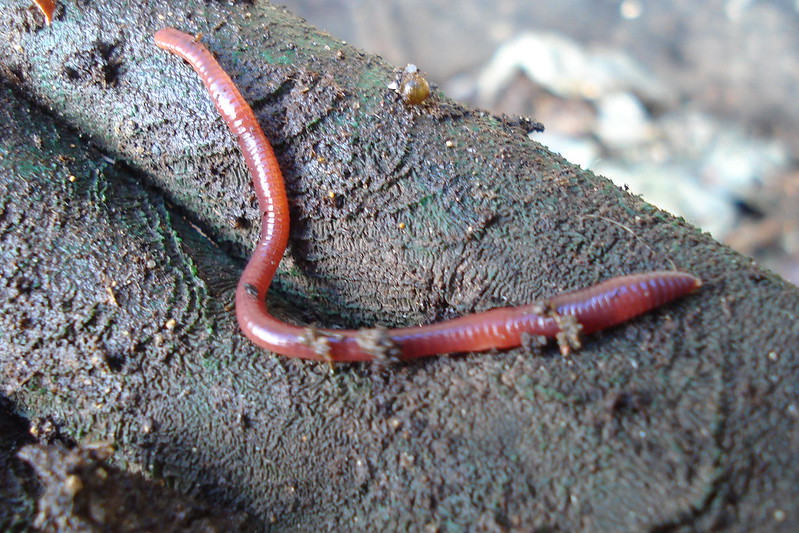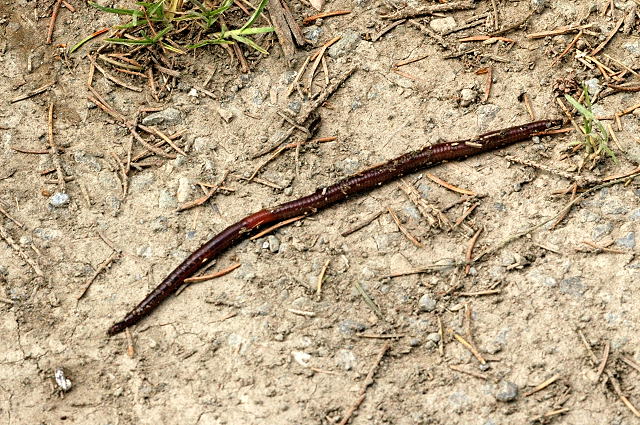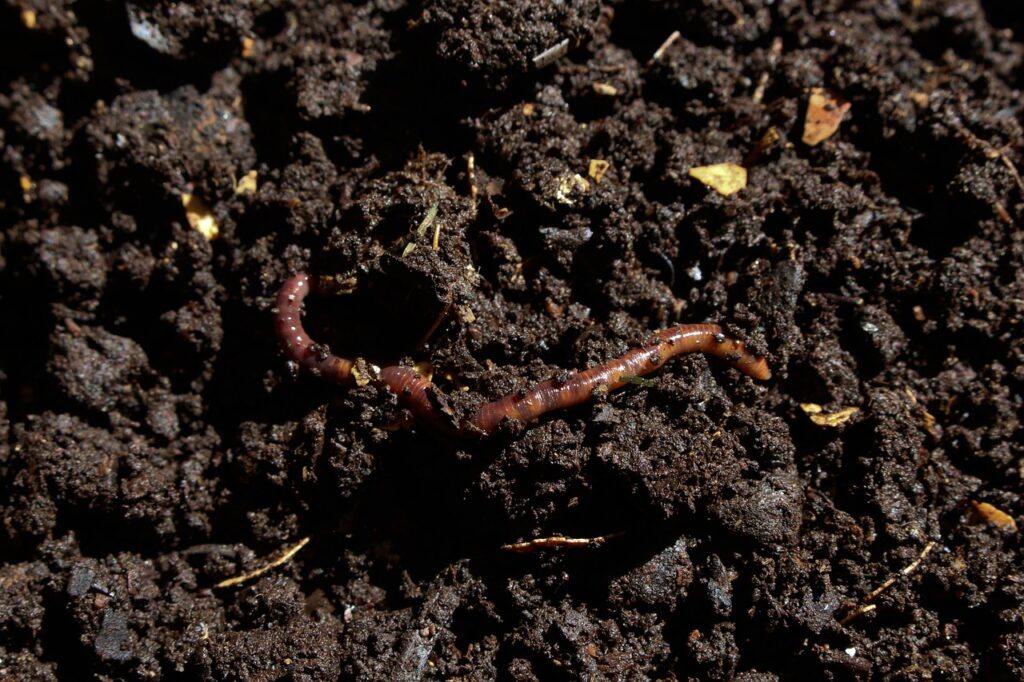Composting is where you allow organic material, like kitchen waste and paper products, to decompose. The resulting compost can be added to soil to improve the health of your garden, flowerbed, or lawn. Compost is rich in nutrients and is a great way to promote plant health and reduce the garbage you throw into landfills, where they rot and add to our carbon footprint, among many other benefits.
The numerous ways to compost involve anything from burying organic waste in a hole to allowing it to decompose in a pile in your yard. One very popular way is vermicomposting. This involves using worms to help with the decomposition. Vermicomposting can be fun and is a great way to naturally reduce your waste. The worms digest the organic wastes in your compost pile and produce worm castings. These castings are incredibly rich in nutrients for your plants and can be added to the soil.
You can’t just use any worm, though; there are certain breeds of worms that you want to use to compost. In this article, we will cover
- The types of worms you can use and why
- Where to buy compost worms
- How many compost worms to buy
- How to handle the compost worms that you bought
Once you’ve read through this article, you should be able to buy compost worms for your bin in just a few minutes, including knowing how many to buy and what to do when you get them.
Types of Compost Worms
You can’t use just any worm for composting. Compost worms, also called manure worms, are particular breeds of worms. For compost worms, we need them to
- Decompose organic waste
- Handle the conditions of our compost bin
- Reproduce well in captivity
There are three main categories for the thousands of species of worms:
- Epigeic / Epigean earthworms – live at or on the soil surface that is rich in organic matter (e.g., leaf litter, manure, etc.)
- Endogeic earthworms – live deeper in the soil and burrow horizontally
- Anecic earthworms – live deeper in the soil and burrow vertically
For composting, especially in a shallow bin, we generally look for epigeic worms that come up to or near the surface to feed. That doesn’t mean that you will see them often. While they come to the surface, our composting worms don’t like light and are likely to burrow deeper into the compost when the lights are turned on (i.e., you open the lid, and the sunlight shines in.)
When you go out and buy compost worms, you don’t want to have to do it more than once. Our goal is to buy compost worms that are hearty and healthy, and that will reproduce in our bins, creating an ecosystem that we can continue to feed and benefit from.
There are several types of worms that we can use for composting. The most popular compost worms are eisenia foetida, or red wiggler worms. These are, you guessed it, red. They’re smaller than your average earthworm or nightcrawler. You may sometimes also see them sold as fishing bait. These are the worms that we generally recommend. They are hearty and prolific and can eat half their weight in organic waste daily.

Red Wigglers
Reg wigglers are smaller and not as strong as other types of worms, so they tend to hang out near the top of your compost bin. European and African nightcrawlers, used by some for composting, are bigger and stronger and they tend to burrow deeper into the compost (how they get their name.)
Red wigglers are the most popular and they are also the most readily available. You can buy them more easily.

Driftworm
There is another species of red worm often used for composting. It’s the lumbricus rebellus. It’s a species of European worm often called the driftworm. Unfortunately, it’s also often called a red wriggler (which isn’t confusing at all.)
They tend to be a bit bigger than their more common counterpart and not as popular for vermicomposting, but they are happy to work on your compost pile. In fact, they are very difficult to tell apart from red wigglers, thus why the naming isn’t all that important.
It is widely believed that driftworms and red wigglers don’t interbreed.

Nightcrawlers
While there are various species of nightcrawlers, also often used in fishing, you may see dendrobeana, as a type of compost worm. They often burrow deeper than red wigglers and aren’t quite as effective but they do get the job done.
These are especially common in parts of Europe.
Indian or Malaysian Blue
The Indian Blue (perionyx excavatus) is also commonly confused with the red wiggler. For those in the US and much of Europe, though, they are difficult to find. The Indian Blue favor warm locations and are subject to try to escape from their bin in the event of a thunderstorm or other significant weather, because they are very sensitive to changes in barometric pressure.
African Nightcrawler
Another warm weather worm (they start dying below 60degrees F/16 degrees C) the eudrilus eugeniae burrows a bit deeper than the red wigglers. Their castings tend to be a bit more granular and they can be used in a larger bin with red wigglers in warmer areas.
These are some of the more popular breeds, but you may see others. While you can apply most of our guide here to any worms, it’s intended for use with red wigglers.
Combining Species of Worms
You are generally safe to combine different species of worms. The ones you buy may have other species mixed in. It’s not an exact science, farming worms.
When you add multiple species together, they will generally coexist fine, but every worm has its strengths, weaknesses, and preferences. One of the species is likely to thrive more and will very likely ultimately become dominant, so don’t be surprised if eventually, you see more of one species than others.
How Worm Composting Works
Vermicompost is essentially worm manure. The worms help break down the organic material, speeding up the composting process by months. They then defecate the remains into the compost. This defecation is called worm castings, and it’s very rich in nutrients.
Even though we call it to worm composting, microbes still play a huge role. Nature has a concept that we call symbiosis. It’s when one organism helps out another. Your compost bin is a great symbiotic ecosystem.
Worms don’t have teeth, or even a stomach, to break up and break down food. They rely on the bacteria and fungi that we use for composting to break down the material for them and then they basically suck it up and digest it with the help of bacteria inside their gut. Those bacteria thrive and multiply inside the worm.
When they do that, they create a form of worm manure that is packed with a lot of nutrients and those bacteria that plants can easily absorb.
Where to Buy Compost Worms
Believe it or not, there are several places where you can buy compost worms. You can even get them online at Amazon, though that’s not necessarily our recommendation.
Uncle Jim’s Worm Farm
We have had great luck buying worms online from Uncle Jim’s Worm Farm. Uncle Jim’s will send you a bag of dried-out worms. They arrive quickly, and you can easily bring them back from their slumber.
Uncle Jim’s has a wide selection of worm quantities and various accessories, food, bins, etc, that may help you. They provide great instructions on how to introduce your worms. They also have a good blog with more information and advice on your worms and composting with them.
Amazon sells Uncle Jim’s and a few others. Our experience there hasn’t been bad, but when you’re buying something alive, we want to be as cautious as possible. They seem to arrive more quickly from Uncle Jim’s, and while we haven’t done a scientific study, they seem to last longer.
Meme’s Worms
Meme’s started out as a small bait grower in Valdosta, Georgia. They have grown quite a bit, now offering an online store with free shipping throughout the continental United States. They have a wide variety of worm types and accessories. They are another store that is well worth checking out.
You can buy them in several other places, and you might even have some local places to buy compost worms. We have assembled a directory of places, both online and local. If you have somewhere near you that you recommend or sell worms, please let us know, and we’ll add it to our directory.
How Many Compost Worms You Should Buy
How many worms to buy is one question that feels straightforward but isn’t. We’re going to help you sort that out.
One pound of compost worms is about 1,000 worms. Some places sell them by the pound, and some by the worm count (which is probably measured by the pound). As a rule of thumb, worms eat about half their body weight daily. So that pound of worms will eat about half a pound per day. Generally speaking, this is a good number to get a normal-sized worm bin started.
A couple of things to keep in mind:
- Your worms reproduce prolifically (they like to get busy) and will double about every 60-90 days. So, this is just the starting number of worms.
- Make sure that you can provide enough food waste. You want to provide about half a pound of food waste per day for every 1,000 worms. That’s just the worms you know about. Your food waste needs to keep up as they multiply, so you may want to go a bit smaller to get started.
- Generally, once everything has stabilized, the worms will adjust their population to match the food you’re giving them. For this reason, it’s a good idea to start on the smaller size in terms of the number of worms and let them grow to match what you’re going to give them.
Adding Your Compost Worms
If you order your worms online, they will arrive largely dried out and in a bag or other container. They may even look dead. Don’t worry, you can get them going again. They’re prepared this way so that they can be safely shipped. Worms purchased locally may be more alert.
Either way, you need to adjust them to their new home before you start composting them.
Preparing the Bin
To prepare a worm compost bin, you want to make a nice home for your compost worms. It’s a pretty easy process.
Take a pile of shredded newspaper, ripped up cardboard or coconut coif. This is your worm’s bedding and should be a few inches deep. Mix that with some soil. Then make sure the whole thing is damp. You don’t want it wet, but about the consistency of a moist sponge.
This goes in the bottom of your compost bin.
Introducing Your Worms
Once the bedding is added, you can add your worms to it. You want to give them a day or two to adjust. They’ve had a rough time from the store or package to your bin. Let them adjust to their new home. This just means leaving them in bedding for a day or two.
Once your compost worms have adjusted, you can start introducing your organic material for composting.
Some Closing Thoughts
You can buy compost worms in several places, both online and locally. Red wigglers are the most common type of composting worm. They breed well in captivity, are great composters, and are hardy composting worms.
Other kinds of worms are available in some places, but red wigglers will be a good option for most parts of the world.
Now that you know where to buy compost worms give it a try. They’re a lot of fun, and you’re helping the planet!
Frequently Asking Questions
Do I Need to Keep Buying Compost Worms?
As long as your compost bin is healthy and everything is composting fine, you shouldn’t need to buy any more worms. Your worms will typically double about every 60-90 days if there’s enough food for them.
Do Worms Survive the Winter?
Yes and no. Most compost worms won’t survive the winter unless they live in a warmer climate, but their eggs will. So, while they may die out in the cold weather, their eggs will hatch once it warms up again, and you should have a healthy worm population again.
If you keep your worms warm during the winter, you can keep composting all year long.
Can’t I Just Use Earthworms? They Help With Composting
While it’s true that your average earthworm can help with composting, they don’t breed well in captivity. They’re wild like that. They may help with composting, but you usually can’t keep the population alive in a worm bin (or they just won’t stick around).
What Types of Worms Are Best for Composting?
Red wigglers are the most common, easily available, and cheapest compost worms. They’re available at several places.
